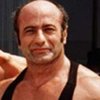Introduction
Oxygen utilization is a critical factor in athletic and training performance. This is usually measured by VO2 max. VO2 max depends on a number of factors (size of lungs, capillaries type) but the most important one is level of iron in blood and muscles.
A lot hinges on the ability of the body to transport oxygen. Oxygen is transported in the blood by the pigment of the red blood cells (hemoglobin). Iron is a component of hemoglobin and any deficiency in this important mineral can impair the oxygen-transporting capacity of the body with the resulting drop in athletic performance.
Myoglobin, used to store and transport oxygen in muscle, also contains iron. Another use for iron is in cytochromes, which are catalysts in energy transfer within the cell. In total the body contains about 3 - 5 grams of iron, and 80% of this is used in the molecules mentioned above. The rest is complexed with compounds which are used for iron transport and storage (e.g., ferritin). Iron is mainly stored in haemoglobin(64%) and bone marrow(27%).
Iron balance is determined by losses and dietary intake. The body can lose iron via blood, urine, or sweat -- although these last two don't appear to be very important. Certain circumstance may make athletes more likely to experience iron loss. It has been shown that a significant percentage of runners experience small amounts of gastrointestinal bleeding after runs longer than 10 km.
Another possible source is referred to as "foot-strike hemolysis". In this situation a small number of red blood cells burst in the vessels of the feet, due to the pounding of running on a hard surface. Most of the iron in free hemoglobin can be reclaimed, but some is filtered out into the urine. If the exercise is unusually severe, damaged muscle cells will spill myoglobin into the blood where the kidneys will excrete it in the urine.
Iron absorption is determined by the amount and type of the athlete's diet.
In general dietary iron is absorbed poorly. Animal sources of iron are about 10 - 25% absorbed. Plant sources are only 2 - 5 % absorbed. Ascorbic acid (Vitamin C) increases iron absorption, whereas tannic acid, found in tea and coffee, decreases it.
When the concentration and absorption of iron falls below a critical level, negatively affecting production of hemoglobin, it results in anemia.
Iron deficiency is the most common form of true anemia (chronic and prolong as opposed to temporary anemic condition from extended strenuous training) among athletes. Stores of iron are depleted before clinical signs show.
Anemia can be confirmed by measuring the hemoglobin levels of the body. An iron deficiency can be identified by blood cell analysis and by determining the serum ferritin level and , if necessary, the amount of haemoisderin in the bone marrow. Young people store only small amounts of iron, and low serum ferritin levels are therefore normal in individuals under the age twenty. The examining doctor needs expert knowledge in order to be able to decide whether or not an apparent iron deficiency is really significant.
Symptoms
In the first stages of iron deficiency, the athlete's performance begins to decline. The athlete may complain of burning thighs and nausea from becoming anaerobic. Ice craving is also common. Athletes with mild iron-deficiency anemia may have a slight drop off in maximum performance. Determining serum ferritin is the most accurate test of one's iron levels.
Two factors must be checked by the sports doctor:
- The athlete's mean corpuscular volume (MCV), which is the average volume of individual cells in cubic micron.
- The relative sizes of the erythrocytes.
Treatment
Diet - Ensure a proper balanced diet, including more red meat or dark poultry; avoid coffee and tea, as they effect iron absorption from grains; have more of Vitamin C sources.
Supplements - Taking supplements can help athletes when dietary sources can't provide the iron required for peak performance. For example, Metabolic Diet developed MVM to address the fact that many preparations don't contain iron.
Click Here for a full listing of Iron Supplements.
Sources:
